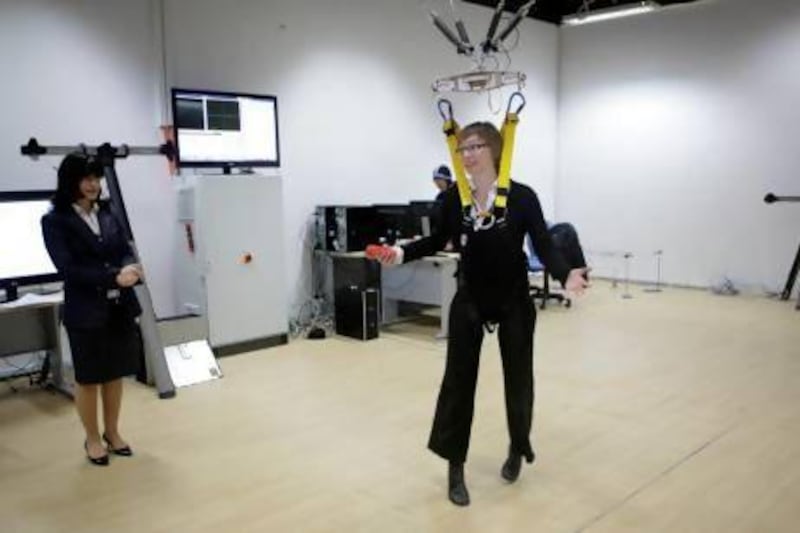Abu Dhabi // A team of scientists from Khalifa University has unveiled a unique robotic device that could revolutionise the way movement disorders are treated and understood.
The Float system - it stands for Free Levitation for Overground Active Training - can not only help people with their disabilities, but could also give researchers new insights into human movement.
Patients are harnessed into the machine, which is attached by wires to two ceiling-mounted runners, and controlled by four automatically operated motors.
Once strapped in, varying levels of assistance can be given to the patient to allow them to walk freely in all directions, without fear of falling or injuring themselves.
The project's leader, Dr Heike Vallery, said "we hope that clinicians can make use of the robot to test new training paradigms with their patients."
This could be far better than standard rehabilitation procedures, which often use treadmills that do not rely enough on the patient's own efforts to move.
With Float, "patients have to do everything themselves and therapists can then provide the minimum amount of support that they need," she said.
The machine can be used to treat a wide variety of diseases or disorders and can easily lift a person from a wheelchair to a standing position, allowing sufferers to build up strength and balance, and ultimately improving their chances of walking normally.
With Float is up and running after two years of development, the team have funding to study diabetic foot syndrome, which can severely limit sufferer's movement.
The system can study minute details of a patient's movement, including the pressure they exert on the floor.
Patients can also be strapped into a motion capture suit - more commonly used by the makers of films and computer games to project lifelike movement onto animated figures - to capture an accurate digital picture of a subject's gait.
Float can even replicate the experience of walking on the moon - allowing researchers to study the effect of reduced gravity on movement.
The only similar device in the world is in a hospital in Zurich. It was also designed by Dr Vallery, but does not have the same capabilities as the Abu Dhabi machine.
Professor Stephen DeWeerth, the head of the university's department of biomedical engineering, is immensely proud of the project.
"This laboratory is state of the art and world class," he said. "To have it here in Abu Dhabi is phenomenal. It is perfect for this kind of study.
"Our local collaborators, and local hospitals who deal with rehabilitation have already said they are extremely interested in using the facility."
It is hoped that if Float lives up to expectations it can be replicated and sold across the globe to hospitals, clinics and other research facilities.






